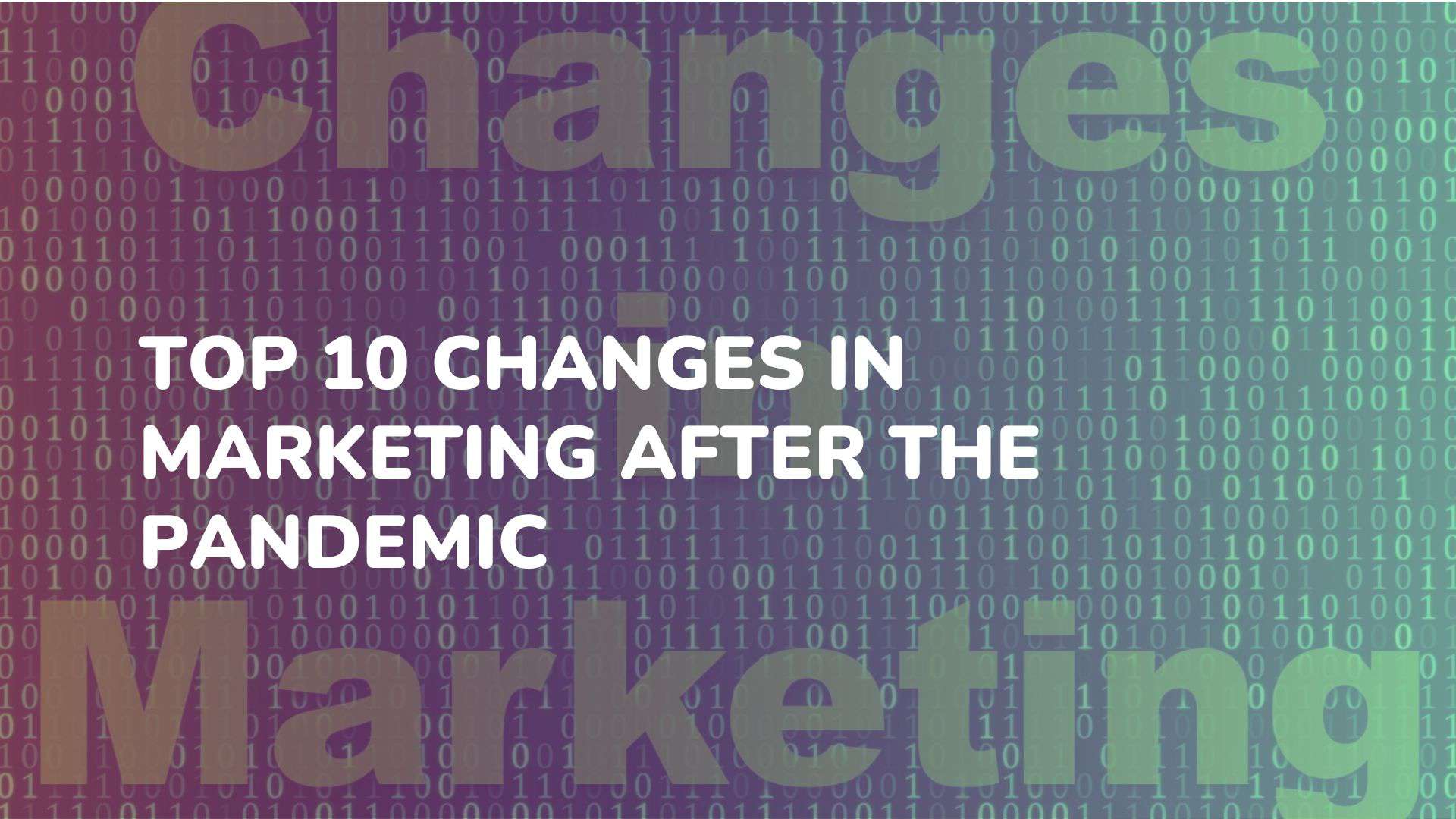Top 10 Changes in Marketing After the Pandemic
After two years of the COVID pandemic causing significant societal disruptions, marketing strategists are preparing to implement new approaches. Marketing is undoubtedly going to be “redefined” after the pandemic. Let’s explore 10 changes in marketing after the pandemic through the following article.
1. Post-Pandemic Marketing Focuses on Understanding Customer Segments
The crisis from the COVID-19 pandemic has led consumers to develop new shopping habits. To effectively resume marketing activities after the pandemic, brands need to communicate accurately with each customer segment.
When deploying post-pandemic marketing strategies, businesses need to tailor their approach to each individual’s circumstances to create a connection between the brand and the customer. Each message needs to be targeted to consumer segments based on factors influencing their purchasing behavior, from psychology to basic elements in customer journey research.
The EY Future Consumer Index conducted five surveys with over 14,500 individuals in 20 countries since the start of the pandemic, forecasting five distinct consumer groups:
32% of consumers opt for affordability and budget, focusing on product/service functionality rather than brand reputation. 25% prioritize health, selecting brands they trust to minimize risks to their and their family’s health. 16% prioritize environmental protection, seeking brands they trust to reduce their impact on the environment. 15% prefer products from organizations with clear quality. 12% are open to new products, new brands, new experiences.
Studying customer segments and personalities will provide businesses with deeper insights and guidance for implementing post-pandemic marketing strategies and creative communications. This information will also serve as a valuable asset for brands to have an overall view of the customer journey.

The marketing industry after the pandemic must capture the distinct, segmented purchasing needs and trends of consumers post-pandemic.
2. Your Competitor is the Customer’s Ultimate Best Experience
If previously businesses were concerned with competition among industry peers, post-COVID-19, your competitor is the customer’s best experience. Indeed, consumer expectations have risen significantly. This has been achieved largely due to the integration of technology into consumers’ lives. The pandemic-driven surge in online shopping has accelerated digital transformations across platforms.
Therefore, post-pandemic marketing requires businesses to change. As the customer’s online shopping experience diversifies, brands need to:
Build appropriate technology and data platforms to support the customer’s shopping journey. Adjust individual and collective goals so that no consumer perceives any disconnection between functional components like marketing, sales, and customer service.
3. Customers Expect You to Know Exactly What They Want
Increasing customer expectations demand continuous creation of excellent customer experiences, in both B2B and B2C models. Presently, consumers expect a smooth, seamless shopping experience.
To deliver such experiences, businesses need to enhance their capabilities in machine learning or artificial intelligence (AI) during post-pandemic marketing efforts. These are factors that can help businesses gather data and provide customer-centric experiences through:
Content delivered via email and applications. Commerce or e-commerce. Convenience benefits for loyal customers.
4. Pursue Customers Like Online Dating
Yes, that’s right! Pre-pandemic, “pursuing” customers was akin to meeting a romantic partner face-to-face. However, the pandemic made online shopping a widespread habit. So, for post-pandemic marketing activities to impress and persuade customers across various online platforms, data and algorithms are key.
Shifting from brand marketing to reach rather than performance marketing will increase customer engagement.
Successful online marketing during and after the pandemic will depend on data and algorithms.

5. Customers are at the Center Throughout the Journey
In marketing, the concept of customer-centricity is not new. So, in the post-COVID-19 era and post-pandemic marketing campaigns, what should businesses do to keep customers at the center of their shopping journey?
To build trust in the brand, product, and service, businesses need to examine the entire customer journey from A to Z, considering operational models, processes, technology, personnel, data models, and KPIs. This helps identify the right ways to interconnect all parts objectively around customer needs before implementing necessary changes.
6. Customer Relations are Everything
Building trust-based customer relationships has always been foundational for businesses. It usually involves promises from advertisements, convincing product quality, customer care service, and finally, the customer experience. The latter serves as proof of the brand’s “promises,” determining the customer’s attitude in the relationship.
However, the pandemic elevated this relational element, particularly in the B2B model. In the virtual sales environment, the sales team’s existing “customer relationships” need to be maintained.
Nurturing relationships in this new online world requires attentive listening to customer needs. Businesses that listen and respond effectively can build trust and offer solutions through post-pandemic marketing campaigns.

7. Agility – The Approach of Modern Marketing
Post-pandemic marketing must adopt flexible approaches like agile cycles based on technological developments. Crisis-driven situations may reveal that communication messages are unsuitable or supply chains are incapable of delivering, leading to advertising or PR crises.
In this context, conventional advertising creative processes and annual budget allocations suddenly become outdated. The fortunate consequence of the pandemic is the emergence of the “agility in marketing” mindset, which will likely become the essence of post-pandemic marketing.
This way of thinking implies constantly listening to consumers, adapting to their needs, and making quicker decisions while being more creative and successful.
8. Brands Must Represent Exceptional Values
COVID-19 truly tested consumer loyalty. The EY Future Consumer Index shows that 61% of consumers, depending on the industry, are willing to consider purchasing white-label products, potentially replacing their trusted brands.
This action, combined with the growing consumer awakening resulting from societal disruptions in 2020, forces brands to focus on post-pandemic marketing campaigns that convey their associated values.
In reality, content from EY’s research reveals that while quality, convenience, and price remain crucial, other factors like sustainability, reliability, ethical purchasing, and social responsibility are increasingly important in consumer decisions.
9. Balancing Business Elements
With the explosion of advertising and marketing technologies, it’s easy to become overly focused on the tech stack and consider it the game-changer in post-pandemic marketing.
Above all, businesses need a balanced understanding of how data and technology can be utilized effectively, the necessary skills to do so, and the right measurement approaches to encourage creativity and success.
Without a balanced approach among technology, data, human resources, and usage frequency, achieving the desired return on investment (ROI) for marketing technology becomes elusive.
10. Central Role of Marketing in Businesses
Marketing was once viewed as a cost center in businesses, where the main task of marketing strategists was to maximize investment efficiency. During tough times, budget cuts often begin with marketing.
However, the post-pandemic perspective has elevated marketing’s role within businesses. It’s now seen as a driver of digital transformation, a leader in customer experience, and the voice of the consumer. Therefore, keeping up with marketing trends is essential for adapting to challenges and opportunities in business.
In conclusion, the pandemic has transformed every industry. Post-pandemic marketers must stay updated on changes and trends to guide their development. Metta is committed to partnering with businesses in the marketing realm, offering experienced professionals to navigate these changes. Metta stays informed and provides the necessary strategies for successful post-pandemic marketing campaigns.
From brand strategy to multi-channel distribution and product strategy, Metta will help your brand excel with post-pandemic marketing strategies, ensuring steady growth. Discover more about Metta’s leading brand-building solutions.
Metta Marketing
Leading Brand Strategy Consultant
SUBSCRIBE TO RECEIVE LATEST UPDATES ON MARKET AND MARKETING.










